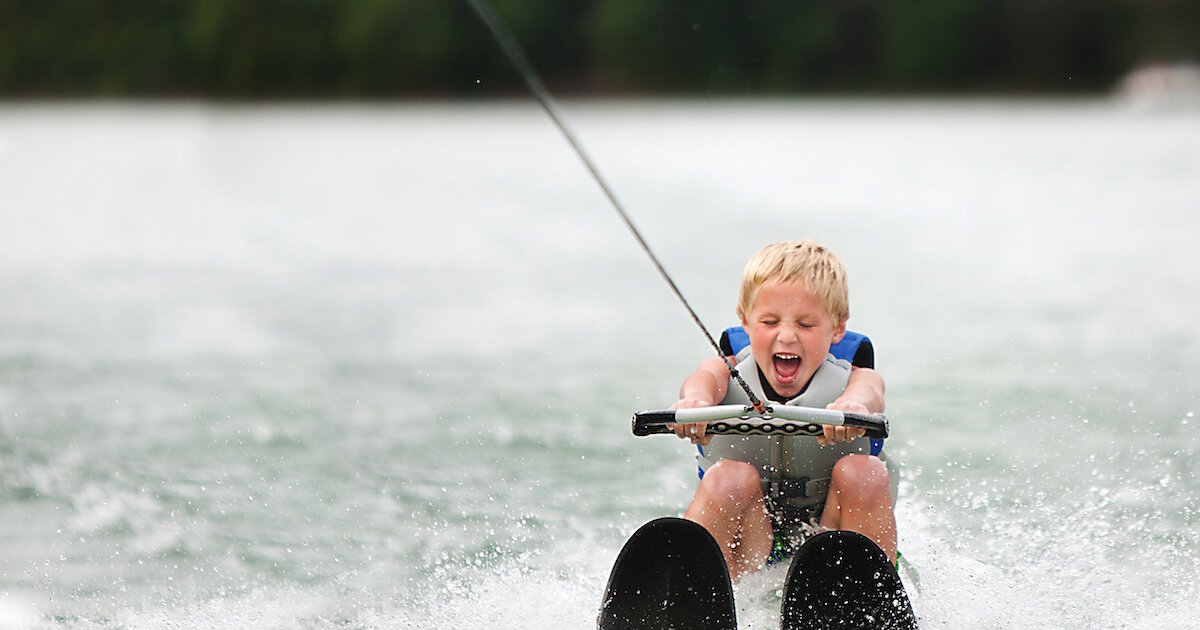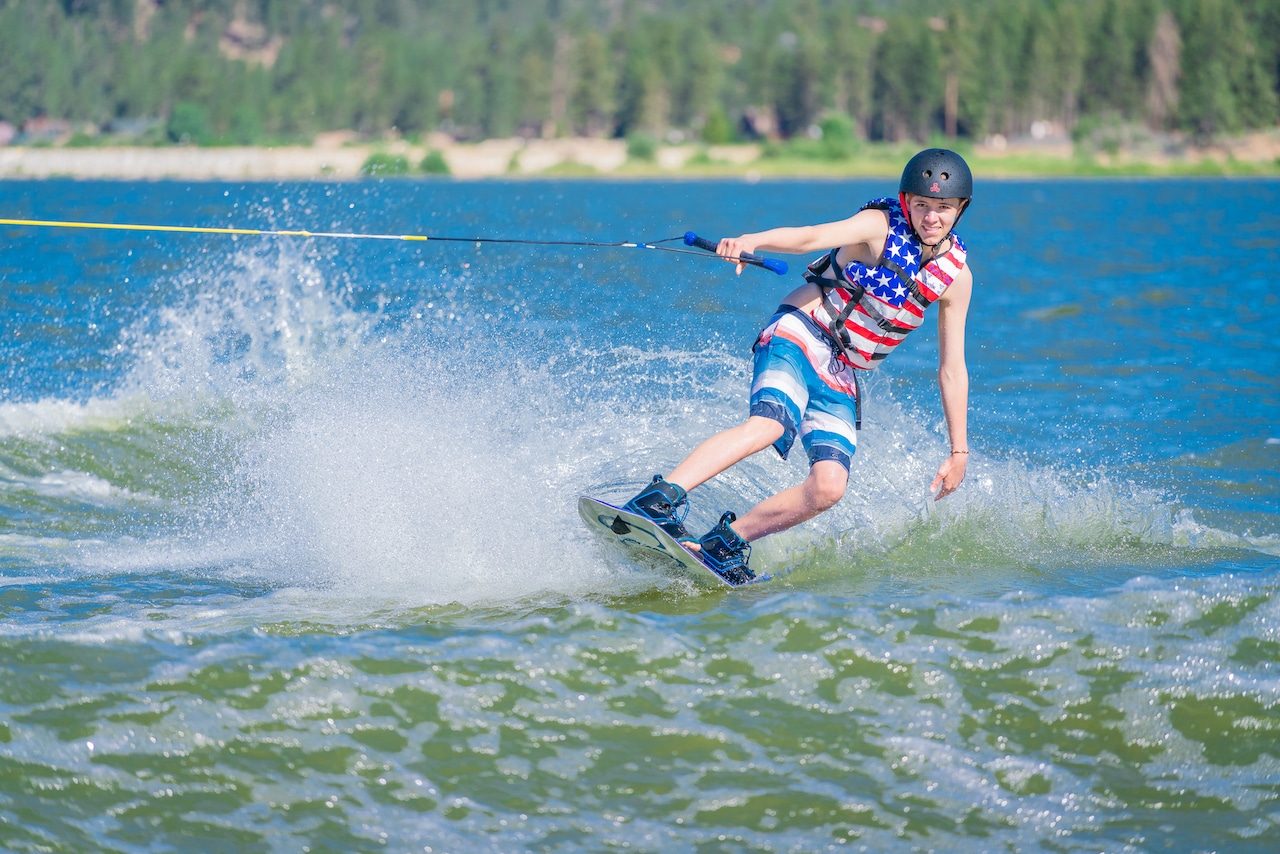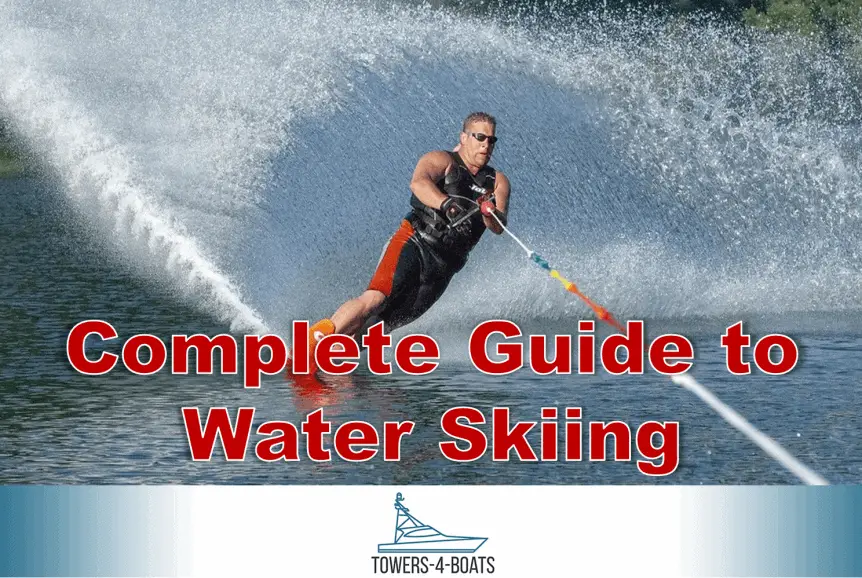Which Is a Recommended Water-skiing Safety Practice
More tips for safety on the water during this water skiing season. Practice proper water safety habits and pay attention to your equipment and taking the right safety precautions.

Pulling A Skier By Boat Top 5 Water Skiing Safety Tips
Always pay attention to the conditions.

. Never use drugs or alcohol while driving a boat water skiing or wake boarding. Look for other people or anything that can get between you and the boat and look for anything you could hit along the side of the lake or river. Have both a spotter and boat driver Personal flotation devices for both skiers and boaters Pick up tow ropes or dropped skis from the water right away Rest up warm up and stay sober Inspect skis for loose screws and cracks.
Never use drugs or alcohol while driving a boat water skiing or wake boarding. If you hear thunder or see lightning stop water skiing and wakeboarding immediately. Always stick to safe speeds.
Square up your shoulders hips knees and ankles over the ski. Make sure the water youre in is deep. A recommended water-skiing safety practice.
A few of the ways you can do that are. A child on two skis will require a speed of 13 to 16 mph whereas an adult on one ski might require as high a speed as 36 mph. Water Safety Apparel When skiing wear a properly fitted US.
As a rule of thumb avoid shallow waters. Always always ALWAYS wear a PFD. Focus on a safe path and the water ahead letting the spotter keep track of the action behind.
Dont water ski or wakeboard in restricted areas. Do not climb into a boat from the water unless the propeller is stopped. Top 5 Water Ski Safety Tips Wear a life vest and make sure your equipment is in good condition.
Keep your body lined up in a solid position and pointed in the same direction. Keep in mind that these are suggested speeds for an adult of average height and are not meant for children. Hold ski up next to you while in watsr.
Let go of the tow rope immediately after a fall. DONT dive into shallow water. Avoid heavily congested areas where there are lots of boats and people.
Heres a few factors to keep in mind. Sets with similar terms. In addition make sure your head is over your hips.
Underway maintain a safe distance from the shoreline other boats sharing the water and any obstacles. Do not climb into a boat from the water unless the propeller is stopped. Try to stay at least 100 feet away from each side of a skier as he or she may not know your boat is there.
As the driver the safety of passengers and the skier or rider is your responsibility. Which is a recommended water skiing safety practice. What is a recommmended water-skiing safety practice.
Use a spotter to keep an eye on the skier. DONT float where you cant swim. Keep checking to see if the water is too deep or if you are too far away from the shore or the poolside.
It will allow you to rest in the water while waiting for the boat it protects the rib cage and cushions falls and its bright color will help others in. A life vest is essential for any skier and there are many different types to choose from. Ideal speeds will vary depending on the skiers weight experience level comfort.
Double-check your lakes buoy markers before making a runand make note of any water level changes in the area. Which is a recommended water skiing safety practice. Always have a spotter sitting at the back of the boat to watch the skier or wake boarder and communicate with the person driving the boat.
Avoid docks swimmers other boats buoys and other possible hazards. Pushing or dunking your friends can get easily out of hand. Ski or wakeboard in safe areas.
This will ensure your safety and other. Do not approach a skier too close from the rear. Let go of the tow rope immediately after a fall.
Take these steps to decrease your risk for water skiing or wakeboarding injuries. Dont ski while under the influence of alcohol or drugs. Always have a spotter sitting at the back of the boat to watch the skier or wake boarder and communicate with the person driving the boat.
Always use a personal flotation device. Where must a vessels Texas registration number be displayed. In areas where water skiing is common its necessary to keep a sharp eye out for skiers at all times.
Dont ever ever ski near docks swimming areas or other boats. Your muscles work together when you ski and if you are too extended you are trying to compensate with something else. Recognize where the water is shallow.
DONT mess around in the water. Both sides of the bow. Which is a recommended water-skiing safety practice.
The United States Coast Guard recommends a Type III personal flotation device because they are designed so that the life vest does not interfere with skiing. If you dont know how deep the water is dont dive. Keep the skis from dragging bottom during starts.
Serious injuries can result from hitting fixed objects such as docks pilings or stumps. Observe for branches submerged objects or other obstacles. Coast Guard approved life jacket.
Skiing is a lot of fun but any time youre in the water its important to stay as safe as possible. It is highly recommended that you wear a Coast Guard-approved personal floation device PFD designed for water-skiing at all times. Allow for a margin of safety against hitting bottom or submerged obstacles during a fall.
What information is most important when passing near a lighthouse. Give water skiers a wide berth. Keep ropes at the same length if skiing with a partner.
Holding up a ski after falling. Safety is critical so its important to have a few basics covered. Be sure you and your driver have an agreed-upon set of hand signals.
A regulatory marker with a cross inside of an orange diamond indicates which type of area. One of the most common recommended water-skiing safety practices is holding up the ski in case you fall. Water Safety Course Chp.
Avoid the shoreline in generalas well as any local swimming areas. And refrain from drinking alcohol while driving the boat water skiing or wakeboarding. Quit water skiing or wake.
The minimum depth should be at least 6 feet. A minimum depth of five to six feet of obstacle-free water is suggested for safe skiing to. Thumbs up to go faster down for slower the OK hand signal to indicate the speed is right.

How To Water Ski Step By Step Instructions Discover Boating

What S Easier Wake Boarding Or Water Skiing Pali Adventures


No comments for "Which Is a Recommended Water-skiing Safety Practice"
Post a Comment